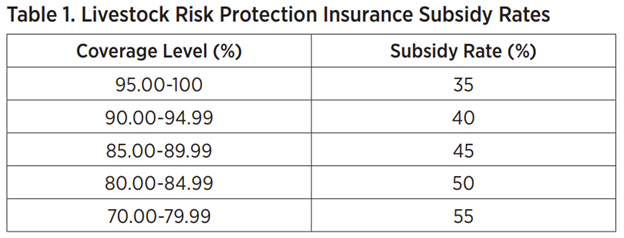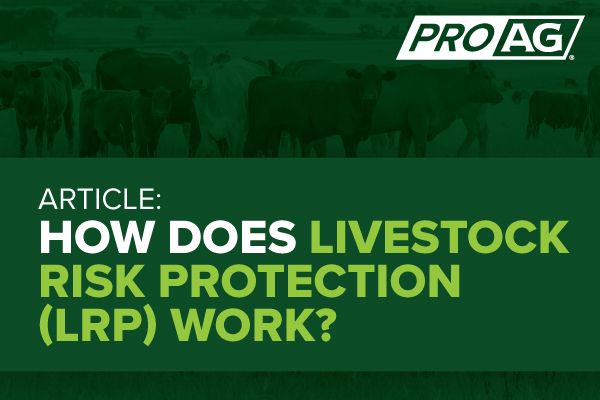Elevate Your Proficiency with Bagley Risk Management
Elevate Your Proficiency with Bagley Risk Management
Blog Article
Recognizing Livestock Risk Protection (LRP) Insurance Policy: A Comprehensive Guide
Browsing the realm of animals threat defense (LRP) insurance policy can be a complicated venture for numerous in the agricultural industry. This sort of insurance coverage supplies a safety and security net against market variations and unpredicted conditions that can affect livestock producers. By understanding the details of LRP insurance policy, manufacturers can make educated choices that may safeguard their procedures from economic dangers. From exactly how LRP insurance coverage operates to the various coverage choices offered, there is much to reveal in this thorough guide that might potentially form the means livestock producers approach threat management in their companies.

Just How LRP Insurance Works
Sometimes, understanding the mechanics of Animals Danger Defense (LRP) insurance can be intricate, but damaging down just how it functions can give quality for breeders and farmers. LRP insurance policy is a threat administration tool created to protect animals producers versus unforeseen rate decreases. The plan permits manufacturers to set a protection level based upon their details demands, selecting the number of head, weight array, and protection cost. When the plan is in area, if market value fall listed below the protection cost, manufacturers can file an insurance claim for the distinction. It is very important to keep in mind that LRP insurance coverage is not an earnings assurance; instead, it concentrates entirely on cost danger security. The protection duration usually varies from 13 to 52 weeks, supplying versatility for producers to select a period that straightens with their production cycle. By using LRP insurance policy, ranchers and farmers can reduce the monetary threats connected with fluctuating market costs, making certain greater stability in their operations.
Qualification and Protection Options

When it comes to insurance coverage alternatives, LRP insurance uses manufacturers the versatility to select the insurance coverage degree, insurance coverage period, and endorsements that ideal match their danger management needs. By recognizing the qualification requirements and protection options readily available, animals producers can make informed choices to handle risk effectively.
Advantages And Disadvantages of LRP Insurance
When evaluating Animals Danger Security (LRP) insurance, it is necessary for animals manufacturers to evaluate the advantages and drawbacks integral in this danger monitoring tool.

One of the key benefits of LRP insurance policy is its ability to offer security against a decline in livestock prices. Additionally, LRP insurance provides a level of flexibility, enabling producers to customize protection degrees and plan periods to match their details demands.
One limitation of LRP insurance is that it does not protect versus all types of threats, such as condition break outs or all-natural catastrophes. It is crucial for manufacturers to very carefully assess their private risk direct exposure and monetary scenario to figure out if LRP insurance is the appropriate risk monitoring tool for their procedure.
Understanding LRP Insurance Policy Premiums

Tips for Taking Full Advantage Of LRP Conveniences
Making the most of the benefits of Livestock Danger Security (LRP) insurance policy requires calculated preparation and aggressive threat management - Bagley Risk Management. To make the most of your LRP protection, take into consideration the adhering to pointers:
Frequently Examine Market Problems: Keep educated concerning market fads and internet price fluctuations in the livestock industry. By keeping track of these elements, you can make informed decisions about when to purchase LRP coverage to secure against potential losses.
Establish Realistic Coverage Degrees: When picking insurance coverage degrees, consider your manufacturing prices, market worth of animals, and prospective dangers - Bagley Risk Management. Setting realistic coverage degrees makes sure that you are properly safeguarded without overpaying for unneeded insurance coverage
Diversify Your Coverage: my blog Rather of depending entirely on LRP insurance, consider expanding your danger management approaches. Incorporating LRP with various other risk management devices such as futures contracts or options can provide comprehensive coverage versus market uncertainties.
Testimonial and Change Coverage On a regular basis: As market conditions change, occasionally examine your LRP coverage to guarantee it lines up with your existing danger direct exposure. Changing insurance coverage levels and timing of acquisitions can assist optimize your risk defense technique. By following these tips, you can take full advantage of the advantages of LRP insurance coverage and protect your animals operation against unpredicted dangers.
Verdict
In final thought, animals risk defense (LRP) insurance is a beneficial tool for farmers to handle the economic dangers related to their livestock procedures. By recognizing how LRP functions, qualification and coverage choices, in addition to the advantages and disadvantages of this insurance, farmers can make educated choices to shield their incomes. By very carefully taking into consideration LRP premiums and implementing methods to maximize benefits, farmers can reduce prospective losses and make certain the sustainability of their procedures.
Animals manufacturers interested in getting Livestock Risk Protection (LRP) insurance coverage look at this now can check out a variety of eligibility requirements and protection choices tailored to their specific livestock procedures.When it comes to protection options, LRP insurance policy offers producers the versatility to select the protection level, coverage period, and endorsements that best match their threat monitoring requirements.To comprehend the ins and outs of Livestock Risk Protection (LRP) insurance totally, recognizing the aspects affecting LRP insurance coverage premiums is essential. LRP insurance costs are figured out by different elements, consisting of the insurance coverage level chosen, the anticipated cost of livestock at the end of the insurance coverage period, the type of livestock being insured, and the size of the protection duration.Evaluation and Adjust Insurance Coverage On a regular basis: As market conditions transform, regularly review your LRP insurance coverage to ensure it straightens with your present risk direct exposure.
Report this page